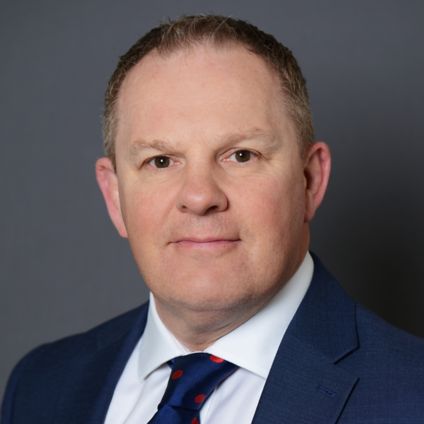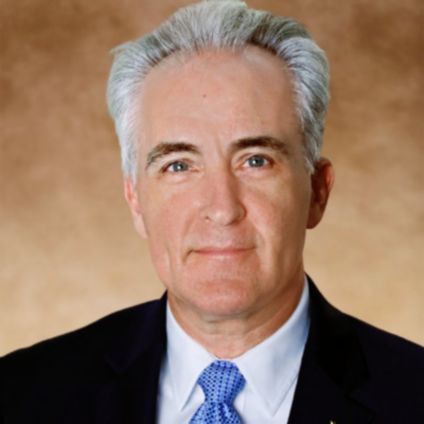Preview:
- Health leaders from the UK, Australia and the US share the lessons they’ve learned from the pandemic through a virtual round table.
- New ways of working, accelerated digital transformation and patient self-management are seen as pandemic silver linings.
- Regardless of jurisdiction, workforce shortages, ability to meet demand, and supporting workforce wellness were shared concerns amongst the leaders.
Pre-pandemic healthcare organizations were focused on issues of access, quality improvement, workforce, digital transformation and financial sustainability. As societies continue to live amid COVID-19, I thought it would be a good time to check in with leaders to see how their priorities have changed given the greatest public health crisis in more than a century.
Healthcare leaders from Australia, the United Kingdom and the United States joined me for an informal discussion and shared their perspectives on both learnings from the pandemic and the path ahead. These leaders oversee medium-to-large hospitals, and health systems that span both publicly and privately funded systems.

Cathryn Cox
Cathryn is Chief Executive Officer for the Sydney Children’s Hospitals Network in Sydney, Australia. The network is the country’s largest pediatric health entity with more than 8,000 staff who cared for more than 170,000 children through two tertiary/quaternary hospitals, a hospice, a statewide retrieval service and the “Kids Research” center.

Steve McManus
Steve is Chief Executive Officer for the Royal Berkshire NHS Foundation Trust in Reading, England. The Trust is one of the largest general hospital foundation trusts in the country with 5,500 staff providing care to a population of around one million people through six campuses.

Jason Virelli
Jason is Vice President of Corporate Strategy at Baptist Health South Florida, a faith-based, not-for-profit integrated healthcare system in the United States, serving Miami and surrounding counties. With more than 24,000 staff, his organization is one of the largest private employers in Florida and provides care to 6.5 to 7 million people through 12 hospitals and other clinical locations..
My discussion with Cathryn, Steve and Jason spanned a number of topics including lessons learned leading organizations through a pandemic, insights on different ways of working, organizational and digital transformation, along with their views on opportunities and worries. Below is a transcript of the rich discussion.
As you reflect on the last two years of COVID, what are some of your biggest insights?
Steve McManus
I’d like to offer a few reflections from the last couple of years. First, is that we have been very clear to maintain the narrative that we've been challenged but not defined by the pandemic. That’s really important because at the Royal Berkshire, we have invested significantly in our long-term strategy and in the culture of our organization through distributed leadership, innovation and in people, our greatest asset. It was very much our people and their ability to make decisions locally, that really came to the forefront during this period.
We have been very clear to maintain the narrative that we've been challenged but not defined by the pandemic.
Second is that the pandemic has also exposed in a much clearer way health inequalities that we have within our communities and how we need to really, think about those. And finally, it has also exposed beneficially the value of working in a larger system level, but also some issues, like healthcare affordability.
Cathryn Cox
The thing that I found early on in the pandemic was there was a need to communicate often and clearly. People were really frightened and wanted information, and you had to be honest if you didn’t know things. Clinicians were anxious in not knowing what was coming through the door and we had issues related to PPE and supply chain disruption. It was enormously difficult to manage, and what became quite clear to me was that good structures and good governance were essential.
Jason Virelli
At Baptist Health South Florida, our experience with COVID has been very interesting. We’ve had five waves and each wave has been challenging from an inpatient capacity and staffing perspective. Eight or nine of our hospitals have been routinely at or over 100 percent of their total bed capacity. This is an interesting dynamic when looking at the future of healthcare because we were thinking more beds were not needed but the pandemic has caused us to rethink the number and type of inpatient capacity required for the environment of care.
How did your organization change the way it worked during the pandemic?
Steve McManus
At the Royal Berkshire, we had made strategic investments to become a highly digital organization. In response to the pandemic, we leveraged our digital capabilities to develop clinical services to support and serve our community in different ways. Post-pandemic, this is something we will hold onto.
We are also thinking about how technology and innovation can be used to give the community greater opportunities for self-management and self-care that are supported by our organization. A great example of this is our virtual COVID ward. Through this initiative, patients who are diagnosed in the Accident and Emergency Department are returned to their homes with remote monitoring, and respiratory support. This idea could be extended to a virtual homecare model for other diseases and disorders.
It's not necessarily about the virtual visit. It needs to be about something much broader, the overall digital experience.
Jason Virelli
Building on Steve’s digital point, we were also able to leverage our digital capabilities in the first wave of the pandemic. With the help of KPMG, we opened up our digital platform “Care on Demand” and offered it for free to everyone. We were hoping that the adoption would be very quick, and it was. We were also hoping there would be some stickiness, post-COVID, and that this would be the way to fuel further digital adoption. One of the things we’ve found and are still working on is that it's not necessarily about the virtual visit.
It needs to be about something much broader, the overall digital experience. There's so much more to it and that's really speaking to our next stage strategy vis-a-vis things like remote patient monitoring, home care and how we can leverage what we've learned in the past two years and take that to the next level.
Cathryn Cox
I have similar sentiments. At Sydney Children’s Hospitals Network, the pandemic accelerated directions we were already going in around digital and care in the home. To Steve’s point about keeping your strategic direction and not letting COVID define everything, COVID has accelerated and driven some of the innovation we wanted to do regardless.
The pandemic has also amplified the importance of the health and wellbeing of our people, psychological safety, and workplace wellness. In response, we put more supports in place to keep our people psychologically well and we will continue to do this in the future.
In terms of your own leadership style, how have you seen it need to adapt over the last two years?
Cathryn Cox
I don’t necessarily know if my leadership style has changed all that much. I have always been someone who likes to understand what drives people, communicate with them and set a direction. I think those sorts of things became more important, but you also had to recognize and acknowledge peoples’ anxieties about the unknown.
Steve McManus
I totally agree with Cathryn and have a couple of things to add. As a leader, you need to be relentlessly focused on patients and your community, in terms of the language you are using. I think being relentlessly optimistic is also important because if you're not, who will be?
Another reflection I’ve had as a leader would be actually talking about your own vulnerabilities openly. This is something that I’ve actively tried to do throughout the pandemic in video blogs and through my interactions with staff. As a leader, you need to recognize that it’s a difficult situation and that you feel it as well and to also talk about ways to gain support and help.
Have you observed any COVID silver linings?
Cathryn Cox
I have certainly observed some COVID silver linings. The first is that interdisciplinary care really came to the forefront because we had to think differently, such as how allied health workers came into the mix, helping out in emergency departments and ICUs and about how these disciplines worked together to get to an outcome. The pandemic has made people realize that we need to work differently. We need a healthcare workforce that is more agile and able to be flexibly deployed.
Interdisciplinary care really came to the forefront because we had to think differently.
Another silver lining came as a result of Omicron. We were worried the variant would overwhelm our healthcare system, so we completely changed our COVID care model to self-care. Through this experience, I learned that if empowered and given the right technology and trusted information, the community can manage some illnesses themselves. I think there is a huge untapped opportunity with this model.
Jason Virelli
As a result of COVID, we’re currently looking to further augment digital with our traditional brick and mortar solutions whether it be for primary or specialty care. Looking to the future, we may also extend these solutions into homecare, hospital at home or remote patient monitoring.
Another silver lining for our organization is that the local community has really been thankful and have embraced direct patient caregivers. As a result, we’ve also been somewhat inundated at our outpatient locations where we’ve had to adjust operations in order to accommodate patients during COVID peaks. At Baptist Health, our vision is to be the healthcare system that people instinctively turn to for care. As we deal with these volume challenges, it’s one of those “be careful what you ask for” situations because to some degree it's actually our vision becoming reality.
Steve McManus
Great insights from both Cathryn and Jason! I certainly echo Jason's point about community appreciation.
In terms of COVID silver linings, I’ve seen a golden thread running through national policy about reducing health inequalities in a really evident way that hasn’t been there before. I think there has also been an important reversal around the value of public health, public health knowledge, and how public health expertise and data needs to be embedded into systems and within provider organizations.
Those are interesting opportunities that lay before us as we begin to put COVID in the rearview mirror. At the same time, could you touch upon the topics that worry you?
Cathryn Cox
I think what worries me the most is our fatigued workforce. It is for this reason that we’ve reactivated our strategic planning process at Sydney Children’s Hospitals Network.
It worries me if we let COVID be the only narrative then we are not going to be able to imagine coming out the other side. When talking about what future healthcare systems look like, we need to keep in mind that they will be a bit different, moved around, shaped by COVID but not defined by COVID.
My final worry would be the financial sustainability of our healthcare system. We have invested enormously in responding to COVID, but at some point, we need to understand what is financially sustainable into the future.
Steve McManus
I would certainly agree with Cathryn on her point about COVID legacy costs and that's something that we are working through within the NHS. We also definitely have a fatigued workforce.
My main worry also relates to workforce but in a different way. In England, we’ve got a national expectation through government and then into NHS policy around elective recovery that has both a significant resumption and expansion of existing workloads. I'm concerned that this expectation is not backed up by the capability to generate the workforce that is anticipated. So, I think we're going to have to be creative around how we’re using technology and innovation in different ways, getting people to work at the top of their clinical licenses whilst also being really creative around other roles.
Jason Virelli
We also have workforce concerns here in South Florida. We are under extreme pressure to recruit and train nurses and other healthcare professionals to the point where we have many open patient care positions today. The term that our HR leadership is using is the concept of workforce stabilization and it's a short, intermediate and long-term play. While we already have a number of partnerships with local colleges and universities, existing pipeline potential could become maxed out so we're looking at things such as expanding affiliations and possibly starting our own nursing school. We need to challenge ourselves not only to fill positions today but also to develop workforce pipelines to maintain existing care and support our very aggressive future growth strategy.
This has been a fascinating discussion. I think you all have done an excellent job in giving us and our Healthcare Foresight readers a global perspective on how healthcare organizations and their leaders have evolved through COVID.
Key takeaways
- Healthcare leaders echo the need to accelerate many of the strategic initiatives in place before COVID such as transformation in the areas of digital, care access and workforce.
- Organizational flexibility and resiliency are key. Healthcare decision makers should strengthen the day-to-day ways they support their people (e.g., coaching, career development, prioritization of initiatives, leadership, etc.
- COVID has highlighted existing healthcare inequalities given higher infection, hospitalization, and death for many vulnerable and racial populations, and the need to address these gaps moving forward.
- Healthcare organizations should look to broaden digital care experiences beyond virtual visits with providers to encompass connections and access to other services such as pharmacy, remote monitoring and homecare.
- When empowered with trusted information, supported by staff and the right technology, people have shown they are better able to self-manage their health conditions.
- Responding to workforce challenges is a short, intermediate and long-term play. Healthcare organizations should develop workforce pipelines and forge partnerships with educational institutions to meet current and future needs.
KPMG International would like to thank Cathryn Cox, Jason Virelli and Steve McManus for their time, candor, and insights. The following KPMG team members were responsible for orchestrating the virtual forum event:
- Elizabeth Wood, Partner, Operations Advisory, Health, Ageing and Human Services, KPMG Australia
- Jonathan Baker, Partner, Health and Government Solutions, KPMG in the U.S.
- Jason Parker, Global Co-Lead, Operational Excellence in Healthcare, KPMG International and Partner, Health Advisory, KPMG in the UK
Throughout this website, “we”, “KPMG”, “us” and “our” refers to the global organization or to one or more of the member firms of KPMG International Limited (“KPMG International”), each of which is a separate legal entity.


